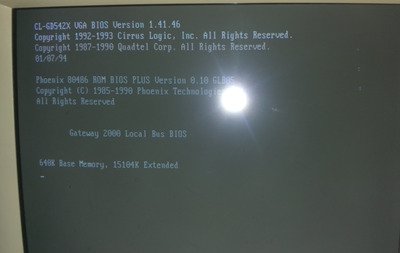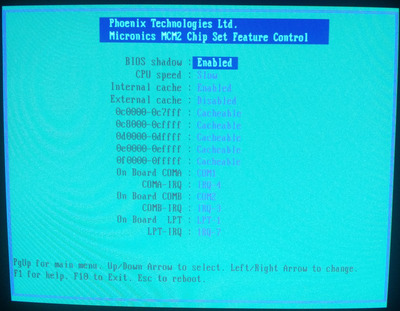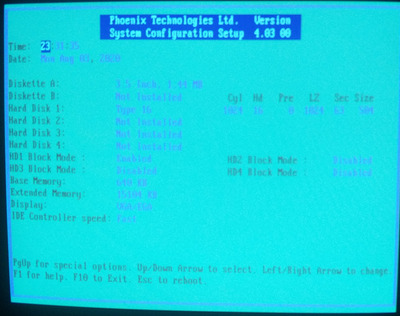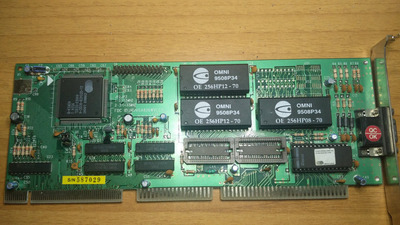First post, by MastErAldo
- Rank
- Newbie
Hello everyone,
It's been a while since I follow this great forum and today I decided to post a my first topic because I need help / advices for my CL GD5424 since I ran out of ideas.
Hopefully someone here can come up with a similar experience and/or give me some hints about what to try.
Basically I have a 486 build I use to play old dos games and I noticed that while games using CGA (like golden axe or Commander Keen 4 in CGA mode) or VGA (doom, duke nukem 3d, Dungeon Keeper, quake, Monkey Island 2, etc) work great (well quake is a slideshow, but it still runs stable), games that uses EGA modes (specifically mode 0Dh 320x200 16 colors) sistematically hang after 2 / 3 seconds once the game is launched. Games like Commander Keen in EGA (every Commander Keen from 1 to 6), Another World, BioMenace, Zak mckracken all hang after a few seconds.
In Commander keen 4 for example it always hangs while drawing the splash screen, sometimes it hangs right after a few lines are drawn, sometimes it almost finishes drawing the image, but I never got to the main menu.
Here's my setup:
Motherboard: Micronics Gemini VLB, like this one: https://i.ebayimg.com/images/g/YBkAAOSwdJtevmle/s-l400.jpg part number 09-00144
CPU: am486dx4 NV8T
Video: Cirrus Logic GD5424 VLB equipped with 1MB of RAM
RAM: 16mb FPM ECC ram 60 ns
Sound: Sound blaster AWE64
OS: msdos 6.22
No external cache
Here's what I tried / notices so far:
I switched the graphic card with an ISA Tseng Labs ET4000 and every EGA game works like a charm. In general every game work fine, but I can't use it since it's the only card I can use with and older 386.
I noticed that If I deactivate the turbo switch (or in general if I slow down the PC using MOSLO or disabling the cache or switching the multiplier to x2) EGA games run for a few seconds more, but in the end they still hang.
If I overclock the 5424 via MCLK (found from this site to 60mhz, I get some artifacts, but Commander keen manages to remain stable until I enter the first level, then the game starts, but it hangs as soon as it tries to scroll the screen.
I tried booting without memory managers (no HIMEM and no EMM386) and skipping autoexec.bat and config.sys settings, but the problem persists in the exact same way.
I belive this is related to some timing issues, but unfortunately I have no experience in going further in the diagnostic.
What I also found is that while the nominal frequency of a CL-GD5424 should be 50mhz, MCLK reports 46Mhz, could it be caused by a defective crystal? Anyway overclocking to 50mhz makes gome run for few seconds longer, but it doesn't help in the end. Underclocking doesn't help.
My card only has 2 jumpers that are used to switch between 33 and 40 mhz bus and it's correctly set to 33, the same of the main bus.
I can't reach that PC right now, but if it can help I can provide a photo of the card I own.
Surprisingly Ford Simulator 3, which also seems to use EGA, works fine most of the times.
Also surprisingly I can run Duke Nukem 3D in Vesa mode at 640x480x256 (never got a problem), but Windows 3.11 at 640x480x16 hangs after maybe 10 seconds of usage.
JazzJack rabbit hangs sometimes on high details, but never on medium, which makes me wonder if there's a component inside the graphic card that, when stressed, fails.
I don't know the things I wrote are meaningful in anyway to someone to come up with a solution / some more advanced hypothesis, but anyway thanks in advance for every hint / consideration that may help me with this problem.
My Projects on GitLab
Micronics Gemini VL-Bus | AMD 80486dx4 NV8T | Tseng Labs ET4000/W32i | Sound Blaster 16 Value CT2770
16mb FPM ram 60ns | IDE 504 MB | 12x CD-ROM Drive | MSDOS 6.22 & Win 3.11



